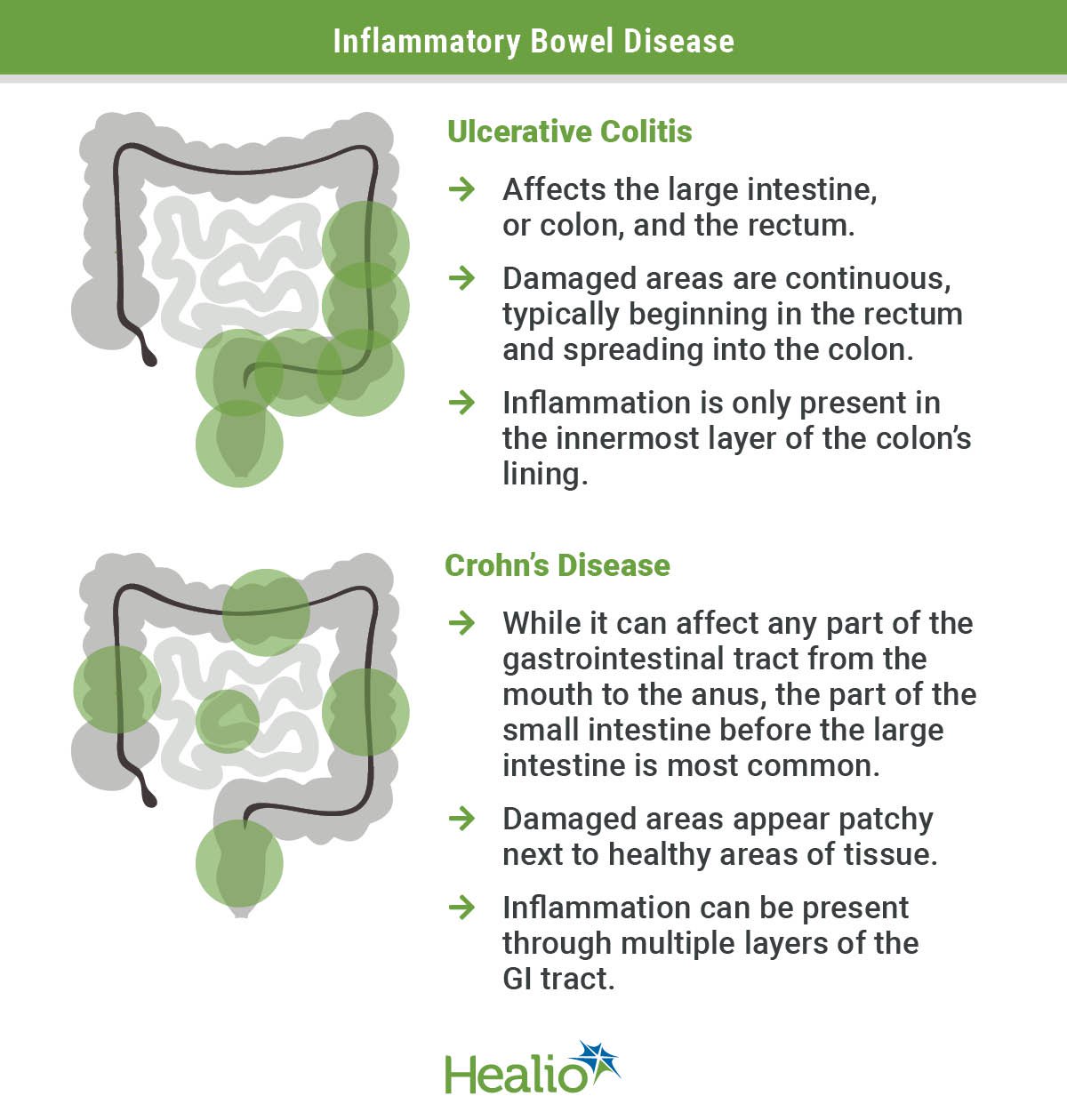Hot Topics in IBD
Disease State
Diagnosing inflammatory bowel disease
Transcript
Editor's note: This is an automatically generated transcript. Please notify editor@healio.com if there are concerns regarding accuracy of the transcription.
IBD is a diagnosis made by a combination of symptoms, endoscopy findings, histology, and imaging. So we're looking for signs of chronic inflammation anywhere in the GI tract, and evidence of inflammation that's leading to either malabsorption, or symptoms like diarrhea or blood in stools.
Ulcerative colitis and Crohn’s disease are inflammatory bowel diseases.
While both cause inflammation and damage to the intestine, they affect different areas of the intestines, vary by depth of inflammation and have a distinct appearance in damaged areas.
Florence-Damilola Odufalu, MD, assistant professor of medicine at the University of Southern California, Keck School of Medicine, spoke with Healio about identifying and diagnosing inflammatory bowel disease.

Reference:
- Inflammatory Bowel Disease. https://www.cdc.gov/ibd/what-is-IBD.htm. Last reviewed April 13, 2022. Accessed May 22, 2024.


